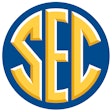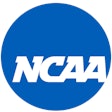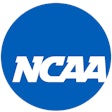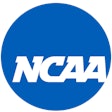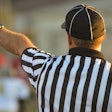
The NCAA Men's and Women's Swimming and Diving Rules Committee in its virtual meeting this week proposed allowing the use of real-time video with underwater cameras, when available, to allow officials to make violation calls.
Currently, when underwater cameras are available, video review is used to confirm violations called by an official.
All rules proposals must be approved by the NCAA Playing Rules Oversight Panel before becoming official. If approved when the panel meets to discuss swimming and diving recommendations July 17, rules changes would become effective for the 2025-26 academic year.
Rules committee members feel that officials should use the technology, if available, with the goal of ensuring the proper application of the technical rules.
False starts
Committee members recommended the use of video review to determine whether the starter's call for a false start in individual events is accurate.
Video review could be used at championship or invitational competitions, governed by a meet or games committee composed of representatives of multiple schools.
Before the beginning of the competition, a decision should be made by the meet committee as to when video reviews will be conducted, and all participants should be informed.
If video review is in place in championship meets, all disqualifications would be reviewed to evaluate whether the false start should be upheld. The referee and a conference or NCAA meet committee representative with no participating school affiliation could review the video to determine whether clear evidence exists to overturn the call.
The referee would have sole authority over the review. The decision would be a judgment call not subject to further review or appeal.
Other proposals
- Allow the order of consolation and championship finals to be decided by the respective championship committee.
- Clarify that changing lanes for any reason during a race, while other swimmers are still competing, would result in disqualification.
- Align diving technical rules with USA Swimming and World Aquatics standards.
- Proximity to the diving board during the flight.
- Definition of tuck position.
- Description of diving positions.
- Align diving referee duties and responsibilities with USA Swimming and World Aquatics standards.
- Protocols for inclement weather.
- Clarification of points allocation and process for wrong position.
- Declaration of failed dives.
The committee also confirmed that 50-yard stroke events are allowed in all championship meets and clarified that in the event of an appeal in championship meets, the meet committee has the authority to act in cases of procedure but not to overturn rules violations.
"I'm proud of the NCAA Swimming and Diving Rules Committee and its efforts this year to improve the rulebook," said Abigail Howard, committee chair and deputy director of athletics and chief administrative officer at Army West Point. "The committee is comprised of coaches and administrators committed to moving the sport forward."

























